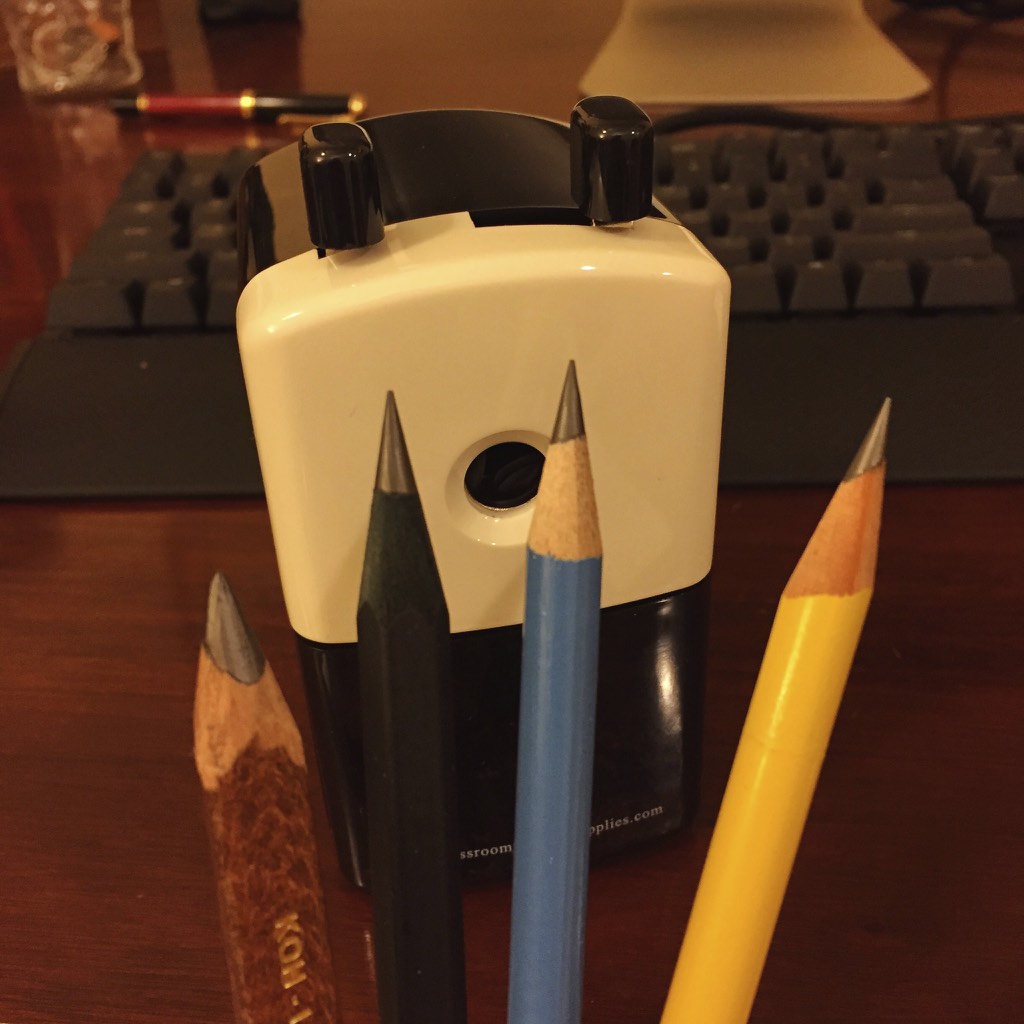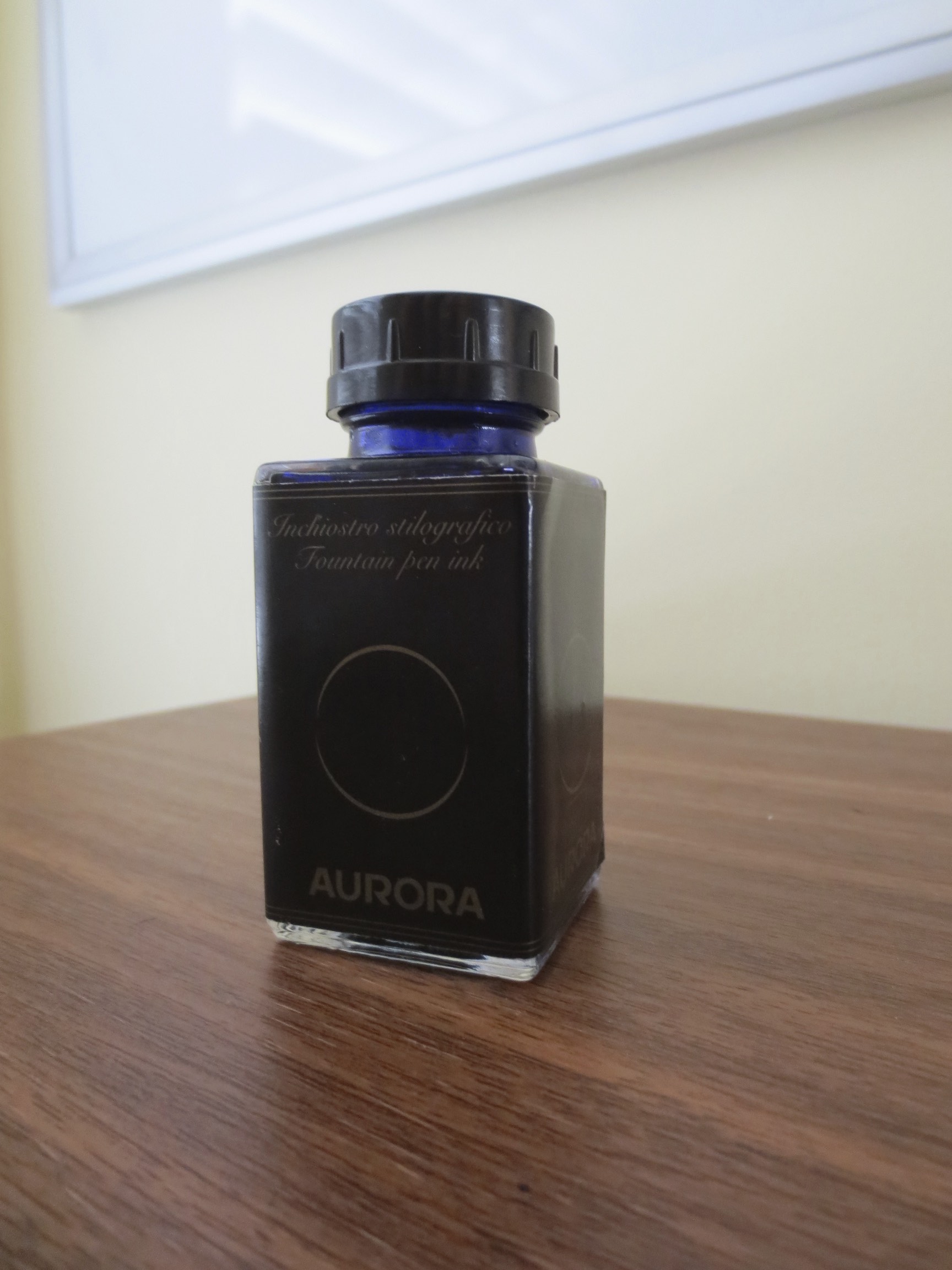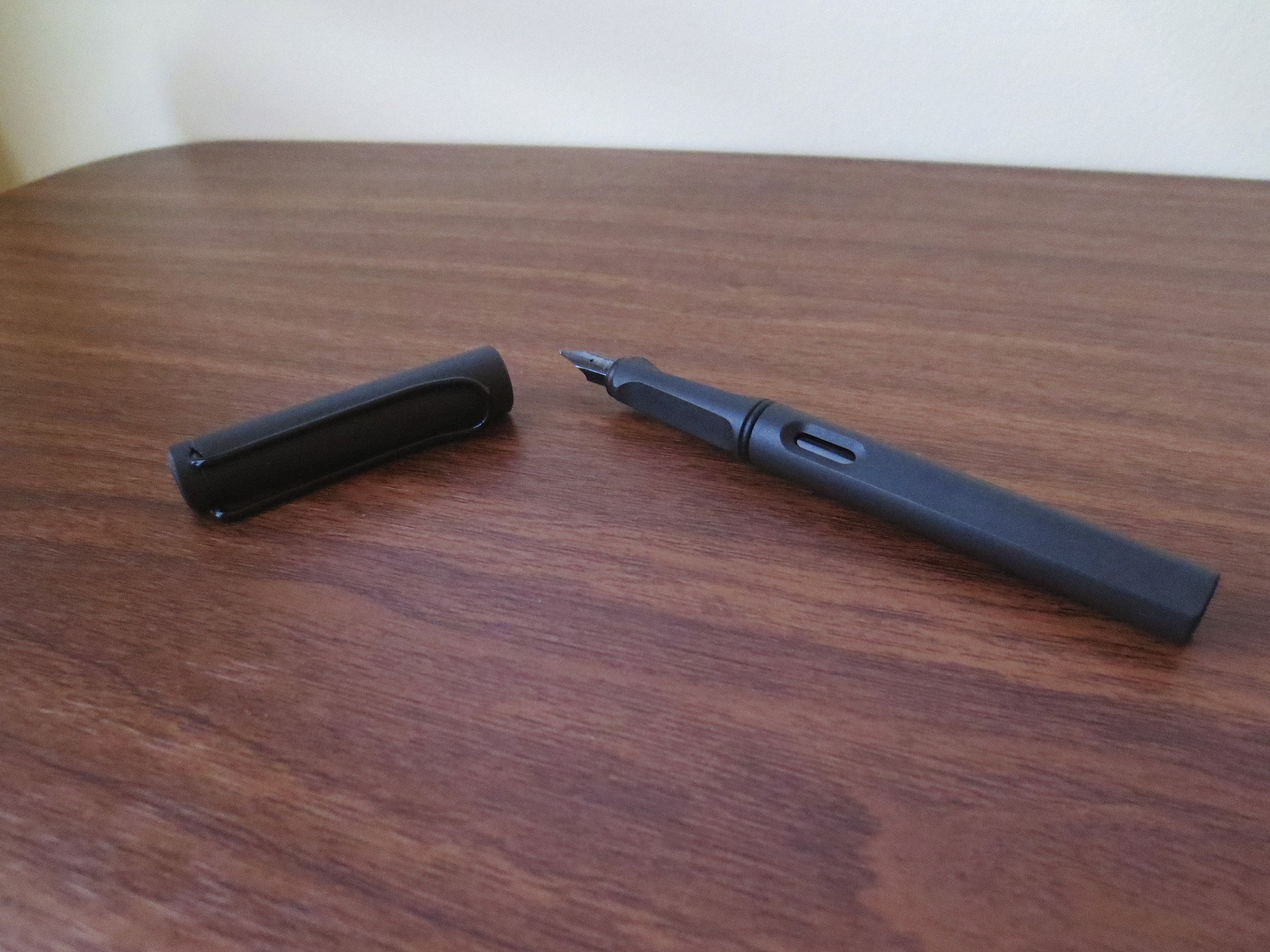One criticism I often see lobbed at product bloggers--and stationery bloggers in particular--is that we review the products we like and largely ignore products we don't (presumably to curry favor with manufacturers and retailers who send out complimentary products for review). I don't see it that way--I think most people just don't like the negativity associated with slamming someone's product, especially where there has been a good-faith attempt to introduce something new into the market. But, reviewing is a public service of sorts, and I do what I must. I've come across an ink that I don't like at all.
I picked up this bottle of vintage (late 1990s, early 2000s) Montblanc Ruby Red ink at Joe Rodgers office supply in Cleveland, Tennessee, when I was in the area over the summer. Remarkably, this bottle also bore the original price tag ($8.50). This ink's name, however, simply does not match the actual color. It turns out that Ruby Red is more of a pinkish coral/peach color, that is so bright at times it almost looks neon. This color just doesn't work for me, and there's not much more to say about it.
I had to adjust the photo some to duplicate the pinkish hue of this ink, which doesn't photograph very accurately. I wouldn't use this color, so there's no reason to keep it. I do wonder, though, how it compares against Montblanc's new "pink" ink.
If you'd like this bottle of ink, leave a comment here on the blog, and in exactly one week I will number the comments in the order they are received and use a random number generator to pick the lucky reader. Unfortunately, since this is ink, and it's a relatively heavy bottle, I'm going to have to economize and make this giveaway open to U.S. residents only. There is nothing wrong with the ink itself. It behaves like a Montblanc ink should, even though it's red. I had no trouble washing this out of the pen (immediately) after reviewing it. Best of luck, everybody!
I will send you this bottle in its original box (with $8.50 price tag). :)










